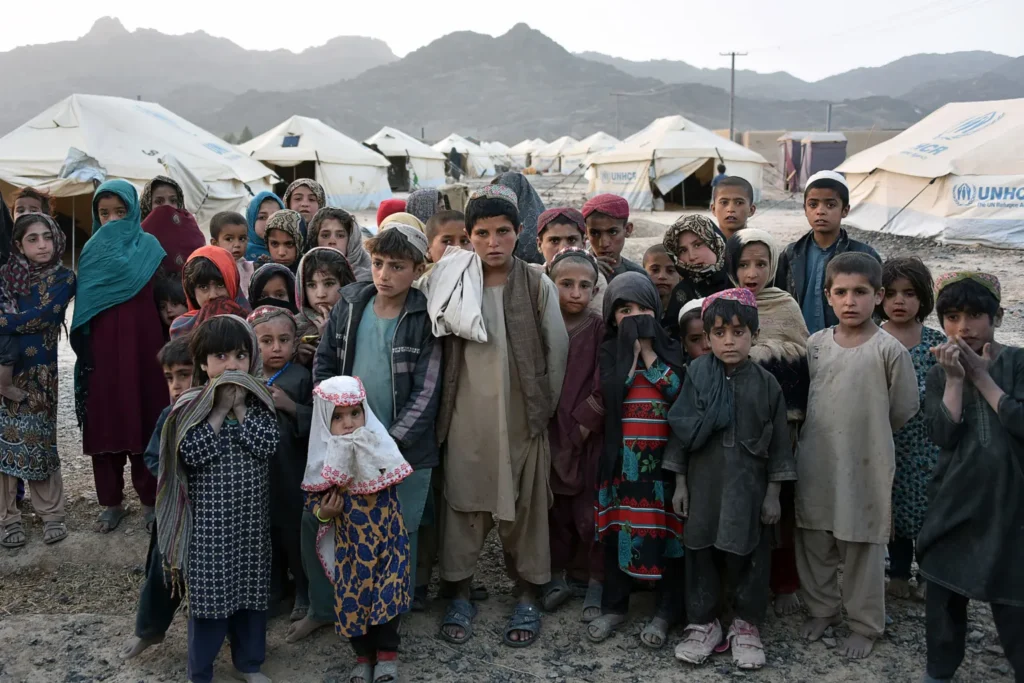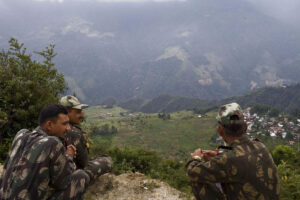
INTRODUCTION
Since the Taliban assumed control of Afghanistan’s administration on 15 August and the end of the US withdrawal on 31 August, tens of thousands of Afghans have been free to depart the country, primarily to the United States. However, not all of the Afghans arrived in the United States. Instead, a number of other countries, some of which had no prior experience hosting refugees and others of which had no ties to the Afghan conflict, indicated that they would temporarily house evacuated Afghans on behalf of the US. So far, the group of countries that have pledged temporary shelter to Afghans who have been evacuated have announced pledges ranging from 450 in Northern Macedonia to 2,000 in Uganda and 5,000 in Ecuador. However, while governments have made these goals public, nothing is known about how many Afghans each country has received so far, or how many additional individuals, including family members of refugees, may be evacuated in the future.
In light of the foregoing, I will examine the situation of Afghans who were evacuated to a third country, specifically what living conditions, protection, and legal pathways to the United States the evacuees have, and attempt to provide an analysis of the approaches of international relations under whose ambit it may fall.
THE REFUGEE INFLUX QUANDRY
The current situation is a fairly unusual kind of international cooperation: temporary protection in third countries at the request of the United States. While the Biden administration has not said why it asked third countries to give temporary shelter to evacuees, there are three basic reasons for this choice. While many of the evacuated Afghans had already applied for the Special Immigrant Visa (SIV) or Priority 2 (P-2) plans, the Biden administration required extra time to deliberate on legal options for those who had not finished their applications, as well as those who were not SIV or P-2 applicants. Secondly, these agreements have given the US administration more time to conduct security checks in these nations before relocating evacuees to the United States. Finally, some observers have suggested that the Administration’s agreements with third nations were motivated in part by political worries about a public response if tens of thousands of Afghans arrived on US soil at the same time without being thoroughly vetted.
The method for Afghans in these third nations has yet to be defined, beginning with who was (and might be) transported there in the first place. Because of the chaotic scenario at Kabul airport prior to August 31, it’s probable that Afghans who were evacuated were transported to US bases abroad or third nations at random. People who had already filed a SIV or P-2 application were most likely taken to US military bases to be processed more rapidly. According to some anecdotal information, the distribution may be based on the evacuees’ occupation in Afghanistan. For example, the North Macedonian administration announced that persons who previously worked with US-led international forces would be welcomed, while the Albanian Prime Minister stated that Afghans who previously worked for the North Atlantic Treaty Organization would be prioritised.
GLARING QUESTIONS WITH AWAITED ANSWERS
What will happen to those evacuees who are “screened out” by the US is one of the most serious problems. Afghans who fail to pass security vetting will not be permitted into the US and may be deported if security concerns surface after they get on US soil, according to the authorities. Officials have not stated where these individuals will be transported.
Of course, the United States and third countries are obligated due to the non-refoulement principle, that prevents the repatriation of anyone who is at risk of torture or other harsh treatment by the Taliban. Some Afghans in third countries may receive offers of local integration or alternative resettlement countries, but it is difficult to think that any other government would wish to take on this burden if the US rejects them on security grounds.
There is no information about what happens to evacuees after they are screened in these third countries, or how this procedure changes in type and duration from a screening in the United States or at a US military base abroad. It’s unknown how many of the evacuees in these third countries will benefit from the humanitarian parole programme established on August 23 for 50,000 Afghans, which allows them to enter the United States on a temporary humanitarian residence permit. Other legal avenues to the United States may be available to these groups, but it is unclear what they will be and how long it will take for them to become available.
What status Afghans will have in these third nations, as well as the ramifications for their rights, such as reception conditions and freedom of movement, remain to be seen. Albania, for example, declared that evacuees would be granted temporary protection status, Kosovo said they would be given a one-year residence card, and North Macedonia said they would be given a visa of three months..
ANALYSING THROUGH THE LENS OF INTERNATIONAL RELATIONS APPORACHES
The quick creation of these temporary protection agreements could be a sign of externalisation, which refers to migration restriction policies implemented outside of the borders of high-income countries. Externalization is described as “actions used by states in regions outside their territorial borders to hinder, dissuade, or otherwise avert refugee arrival.” ‘Efforts that prevent asylum-seekers from approaching protected zone and seeking humanitarian assistance, or repatriation of asylum-seekers as well as migrants to nations where they are not adequately protected,’ according to the UNHCR recently. While the term “externalisation” does not occur in international refugee law, it has evolved into an umbrella term for migratory control policies aimed at deterring asylum seekers and refugees extraterritorially or with extraterritorial repercussions.
These could be thought of as externalisation tests. Instead of allowing evacuees to enter the country, the US government is using its diplomatic clout to outsource responsibility for Afghans to partner countries. Without promises that evacuated Afghans will be protected in the United States, they may find themselves in a legal limbo, with no status in either the third nation or the United States and no way to return home.
Another interpretation of these agreements could suggest that they are a new method for sharing responsibility for refugees, but they could also be another type of externalisation aimed to keep Afghan refugees out of US territory and protection. Given that these arrangements arose from a crisis and were based on broadly agreed-upon principles, their implementation in the next weeks should provide a definite answer to this question.
Responsibility sharing is a concept of international refugee law drawn from the 1951 Refugee Convention’s preamble, which states in part:
“the grant of asylum may place unduly heavy burdens on certain countries, and that a satisfactory solution of a problem of which the United Nations has recognized the international scope and nature cannot therefore be achieved without international co-operation.”
Although the principle is not included in the Convention’s substantive obligations, a UNHCR expert roundtable on the principle recommends that cooperation should “improve refugee protection and possibilities for long-term solutions” and be “in accordance with international refugee and human rights legislation.” The UNGA also known as UN General Assembly enacted the Global Compact on Refugees in the year 2018, with the primary goal of “more fair distribution of the burden and responsibility for hosting and supporting the world’s refugees.”
As a result, one interpretation of the third-country arrangements for Afghan refugees is that they are a new type of responsibility sharing, with a diverse variety of countries, many of which had no prior ties to Afghanistan, stepping up to house evacuees as a show of international solidarity. This might fit easily into what Durieux refers to as the “rescue paradigm,” in which a group of states provides a safe sanctuary. Many of these nations are in the Global South, and others, such as Colombia and Uganda, already have huge refugee populations despite severely underfunded humanitarian and development efforts. Even while these agreements were developed out of a sense of global duty, it is unclear how the United States will show its gratitude and repayment.
CONCLUSION
It’s too soon to say if the current US-led interim protection measures for Afghan evacuees in third countries should be classified as responsibility sharing, externalisation, or a third policy approach. What is evident is that the US government is still figuring out how to put these agreements into action. Finally, they will be evaluated based on their impact on the rights of Afghans in need of protection, such as their reception conditions and freedom of movement in third countries, the duration of their temporary hosting, the scale of admission to the United States, and the provision of solutions for those who are denied entry to the United States.
This article is written by Sarah Azad



